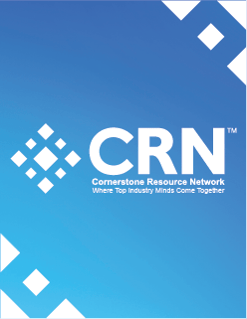Banks often pride themselves on being the “partner” to commercial and small business customers. Most banks believe they add a ton of value for business owners over and above the mere money they lend out. Here’s a sampling of some recent tag lines from our banker brethren:
- “We are not just your bank; we are your partner in business! …”
- “We have earned a reputation as a fair and flexible banking partner.”
- “…supporting high-tech financial services with the high-touch responsiveness of a true business partner.”
- “In this ever-changing business world, you need to work with the right banking partner to make your company outstanding.”
Nice mom and apple pie concepts, but I worry how much of a true partner banks really are for business customers. Do our commercial clients really view us as partners? Are we perceived to have the expertise that entrepreneurs need these days?
In this week’s column, I would like to compel one simple action out of bankers everywhere: it’s time to get serious about marketing to the business customer – not selling, not advertising, but marketing. By marketing I mean it’s time to figure out what business customers really need and play a bigger role in their success. By marketing, I mean creating unique product offerings and delivery capabilities that address the biggest opportunities and gnarly pain points that business owners are seeing and feeling today.
While our industry talks ad nauseam about providing innovative services to the business customer, a quick perusal of any bank’s Web site demonstrates that it’s still pretty much the same stuff: loan, deposits and a bit of cash management. Differences in product menus and delivery capabilities among banks are infinitesimal.
So here’s a simple mandate to address by the end of 2006:
a) grab some star commercial bankers
b) call up the wonks in marketing
c) holler to a few cash management gurus
d) invite a few ops and technology grunts…
…and prepare for a kick-butt planning summit. Brew the coffee strong, lock the doors and raise the bar on where “business services” might go in the future.
To get your summit warmed up, let me suggest a few key areas of strategic opportunity that I think banks are missing:
Strategic Opportunity #1: The Family-Owned Business
Family businesses represent more than 80% of all enterprises in the country, 50% of U.S. GDP and 78% of all new job creation. While family businesses have been the bankers’ bread and butter forever, our industry is too passive concerning the greatest issues facing these clients. For instance 39% of family businesses will change leadership in the next five years, most hoping to retain the CEO spot in the family while others will be forced to hire professional managers. The next 10 years will be a huge transitional time as Baby Boom leaders retire.
Banks can certainly play a more active role in the strategic options these companies face. A recent survey by GW Equity found that 80% of middle-market companies are considering selling their businesses and 75% anticipate selling in the next three years. Over and above debt, bankers have an increased opportunity to get involved in the future equity plan of these companies, whether it be through investment banking, venture capital, a small business investment company (SBIC), or organizing local angel investors. Wealth management offerings such as trust/estate planning and ESOPs need to be front and center in the discussion with family owned businesses going forward. The MassMutual Group/Raymond Institute reported in a 2005 study of family businesses that 20% of family businesses had not established an estate plan, and 55% of these businesses fail to conduct regular formal valuations of their company to accurately forecast future taxes. Let’s get in on this action!
Strategic Opportunity #2: The SOHOs
For an untapped small business opportunity, look no further than the small-office, home-office market, better known as the “SOHOs”. IDC estimates that there are roughly 29 million SOHOs in the United States. These are mostly companies of one in service businesses all the way up to 20-employee offices. According to a recent Harris poll, 72% of American households are thinking about starting a home office or a work-from-home business. With technology and the rise of shared services, there seems to be an unlimited amount of ways to help the SOHOs balance their small size with big demands. Workingsolo.com concludes, “Many SOHOs often fall victim to their own poor billing and collection practices, or delinquent receivables from larger clients.” Sounds like a challenge where a grumpy banker could lend a hand. According to Working Solo, the activities SOHO workers would most like to delegate are bookkeeping, marketing/sales and tax forms.
The SOHO market is also ready for better relationship pricing of its business and personal relationships. Across 9,000+ banks, Compass Bank with the CompassWorks offering is one of the few I’ve seen that has developed an offering around this opportunity.
Strategic Opportunity #3: Business Process Outsourcing
Businesses everywhere are looking for ways to run leaner and meaner. PricewaterhouseCoopers recently reported that the top threat identified by U.S. private business leaders is low-cost competition, much of it due to the offshoring and outsourcing revolutions. For mid-market and small businesses, offshoring to China may not be practical, but couldn’t local and regional banks create process utilities for a network of business customers? Here’s a simple example: Fifth Third Bank announced earlier this year that it had allied with API Outsourcing to provide outsourced Accounts Payable for its business customers. One Cornerstone client was pursuing the opportunity to act as the archive for imaged medical records when its state passed a law mandating this for all physicians. Banks have an opportunity in any area where business operating expenses can be functionally aggregated and managed for efficiency.
Strategic Opportunity #4: Trading partner networks
Remember Ariba, Verticalnet and eScout from the dot.com bubble? The idea was to revolutionize business-to-business commerce using the Web. While round one of the idea was over-hyped and under-delivered, this concept is quietly growing into a reality. Ariba now has 500+ clients using its software on 4 million employee desktops worldwide for automated procurement. The software processes a Web-based procurement order every two seconds or 25 million per year. It’s been an awful ride for these stocks, but maybe banks should think about using their capital to get in the middle of this still-valid strategic opportunity.
For a bank that seems to get the rising supply chain opportunity, take a read of this article from Bank of America’s Web site. Note the bank’s message to business customers: “Bank of America is developing solutions to assist you in optimizing and linking your supply chains with purchase order processing solutions, invoice presentment and payment, document presentation and reporting capabilities that streamline your entire transaction process.”
I think they get it.
Strategic Opportunity #5: The Value of Information and Networking
Finally, banks may want to look for ways to add value by leveraging their position as the information middleman in a network of business customers. Because banks collect a great deal of financial data regarding business customers, the aggregation and sharing of this data can be a tremendous value add. One Cornerstone client who targeted two distinct industry niches created a database that benchmarked clients against peers in the same industry. Banks use services like RMA and First Research for credit analysis – shouldn’t they be using the same information to advise their clients on improved performance?
In addition, bankers simply love getting together for peer group discussions to trade new ideas, but almost no banks facilitate this type of offering for their commercial customers. While bankers don’t want to become consultants, providing industry information and best practice sharing is a tremendous way to differentiate on something other than skinny LIBOR-based loan pricing.
The Real Marketing Plan
When bankers think about how to attack the business market in the future, we can all take some inspiration from Peter Drucker: “The aim of marketing is to make selling superfluous. The aim is to know and understand the customers so well that the product or service fits them and sell itself.”
So, Gonzomongers, best of luck going into the lab and creating the next wave of business service offerings. I’ve included a graphic below that illustrates the myriad needs and opportunities other than credit that banks can be thinking about. If you click on this link, I’ve also provided a simple assessment tool for your team to determine the strength of your marketing plan for business services today.
Let’s get down to business!
-spw

True or False: Our commercial clients really view us as partners. We are perceived to have the expertise that entrepreneurs need these days.
If you stopped to think — for even a second — you may need a plan.
Cornerstone Advisors excels at helping institutions develop and revise their Strategic Plans to address shifts in the marketplace, economic climate and the institution’s focus.
Cornerstone’s broad financial services industry experience adds a critical, objective element as your institution assesses its strategic position and competitive outlook.
Contact us to talk about Cornerstone’s Strategic Planning and Facilitation Services.
5 min read
The Holy Quest for CRM in Anytown, USA
Apr 25, 2024by Elizabeth Gujral
7 min read
Where Does Chime Go From Here?
Apr 4, 2024by Ron Shevlin

.png?width=1000&height=250&name=Cornerstone_Advisors_Logo-removebg-preview%20(1).png)



-2.png?width=247&height=320&name=MicrosoftTeams-image%20(36)-2.png)
-2.png?width=247&height=320&name=MicrosoftTeams-image%20(35)-2.png)